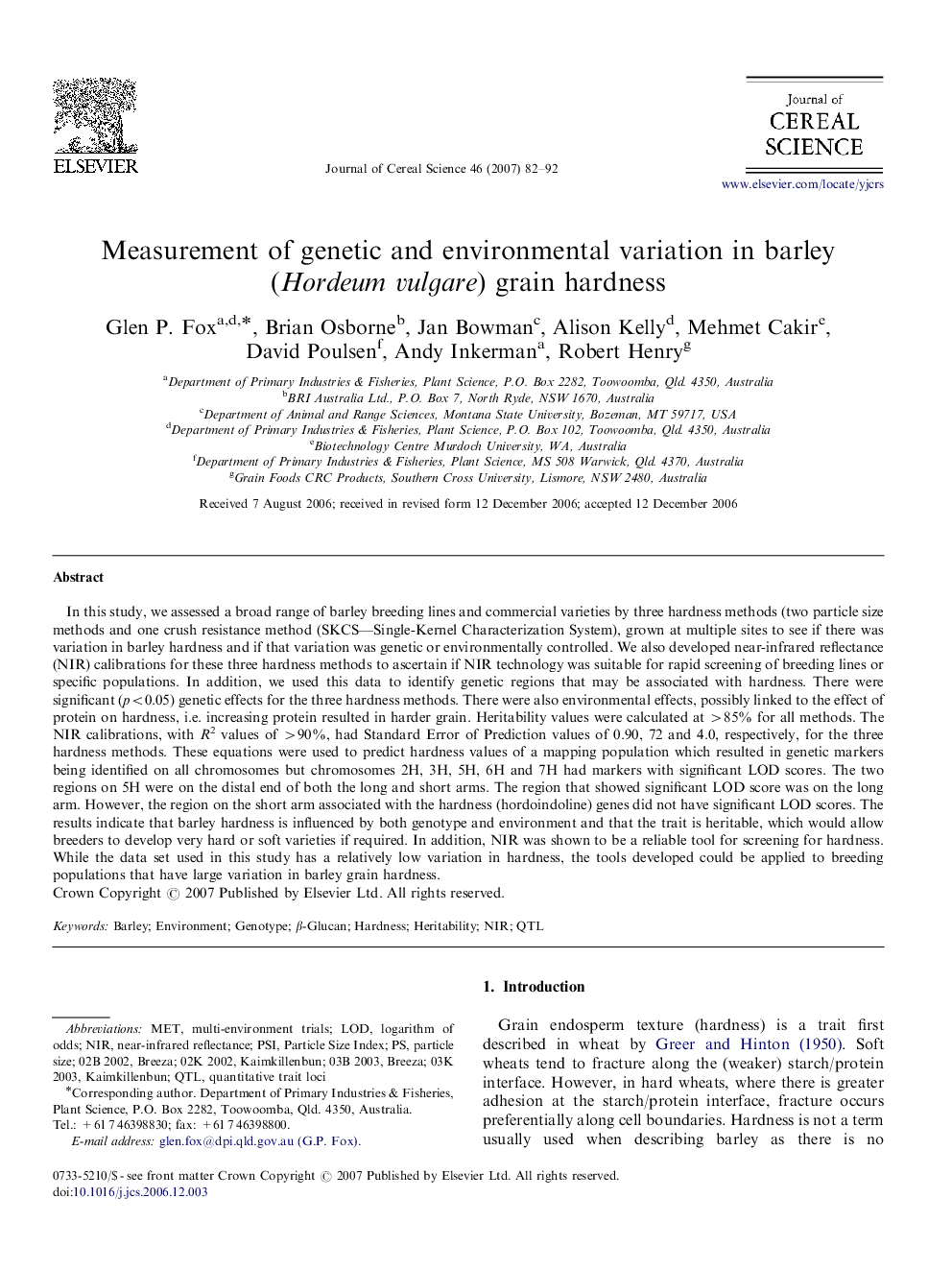| کد مقاله | کد نشریه | سال انتشار | مقاله انگلیسی | نسخه تمام متن |
|---|---|---|---|---|
| 4516513 | 1322359 | 2007 | 11 صفحه PDF | دانلود رایگان |

In this study, we assessed a broad range of barley breeding lines and commercial varieties by three hardness methods (two particle size methods and one crush resistance method (SKCS—Single-Kernel Characterization System), grown at multiple sites to see if there was variation in barley hardness and if that variation was genetic or environmentally controlled. We also developed near-infrared reflectance (NIR) calibrations for these three hardness methods to ascertain if NIR technology was suitable for rapid screening of breeding lines or specific populations. In addition, we used this data to identify genetic regions that may be associated with hardness. There were significant (p<0.05) genetic effects for the three hardness methods. There were also environmental effects, possibly linked to the effect of protein on hardness, i.e. increasing protein resulted in harder grain. Heritability values were calculated at >85% for all methods. The NIR calibrations, with R2 values of >90%, had Standard Error of Prediction values of 0.90, 72 and 4.0, respectively, for the three hardness methods. These equations were used to predict hardness values of a mapping population which resulted in genetic markers being identified on all chromosomes but chromosomes 2H, 3H, 5H, 6H and 7H had markers with significant LOD scores. The two regions on 5H were on the distal end of both the long and short arms. The region that showed significant LOD score was on the long arm. However, the region on the short arm associated with the hardness (hordoindoline) genes did not have significant LOD scores. The results indicate that barley hardness is influenced by both genotype and environment and that the trait is heritable, which would allow breeders to develop very hard or soft varieties if required. In addition, NIR was shown to be a reliable tool for screening for hardness. While the data set used in this study has a relatively low variation in hardness, the tools developed could be applied to breeding populations that have large variation in barley grain hardness.
Journal: Journal of Cereal Science - Volume 46, Issue 1, July 2007, Pages 82–92